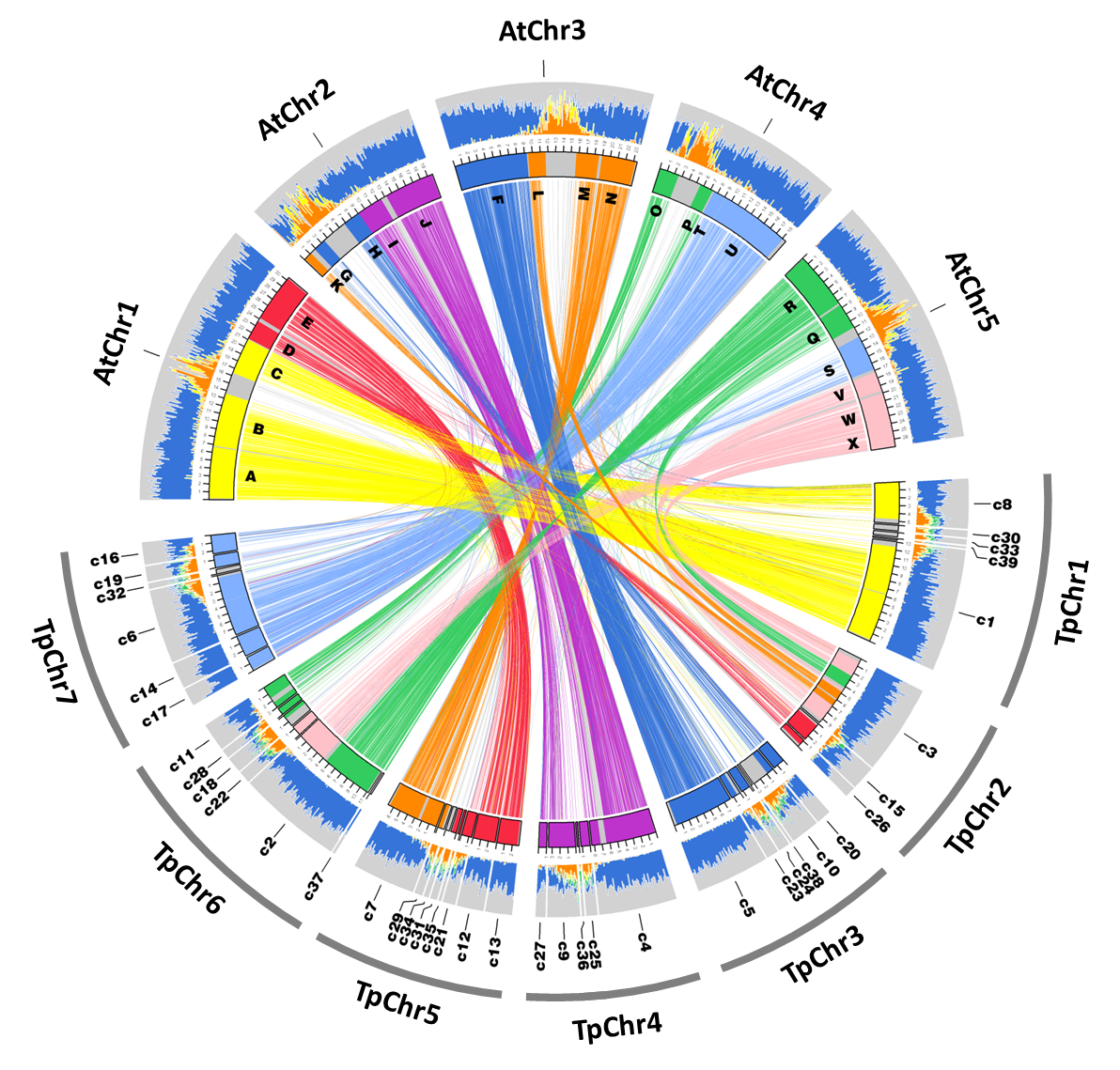
Dassanayake Lab
COMPARATIVE
FUNCTIONAL
& EVOLUTIONARY
GENOMICS
Phragmites genomics

We are hiring a new researcher for this project.
Details on the job decription can be found in the pdf below.
Apply here
Initial results from published work related to this project:
D-H. Oh, K.P. Kowalski, Q.N. Quach, C.Wijesinghege, P.Tanford, M. Dassanayake and K.Clay (2021), Novel genome characteristics contribute to the invasiveness of Phragmites australis (common reed). Molecular Ecology. DOI: https://doi.org/10.1111/mec.16293
How can we use genomics-informed results to control the spread of invasive plants?
Invasive plants worldwide cause for alarming rates of loss of biodiversity and losses in agricultural yield. Mechanical removal or herbicide use is impractical in most cases. Therefore, species specific or even subspecies specific control measures are needed. Phragmites australis (Common reed) is one of the most destructive invasive plants in the US. However, there are native subspecies (P. australis ssp. americanus) as well as invasive subspecies (P. australis ssp. australis). Control measures targeting invasive genotypes based on their genetics offers a promising and sustainable alternative compared to generic chemical control methods. We have sequenced the first publicly available P. australis reference genome. We are expanding our research on invasive genomics to explore traits specific to invasive species and develop genome editing and delivery methods to control specific genotypes of P. australis and an emerging aquatic invasive species, Hydrocharis morsus-ranae (European frog-bit).
We aim to identify invasive genotype specific genomic targets to control invasive plants as a environmentally sustainable mangament practice to conserve native ecosystem.
-A coloborative project with Keith Clay (Tulane University), Kurt Kowalski (United States Geological Survey), and Ping Gong (US Army Engineer Research & Development Center).
Seagrass genomics
The genomic insights of salt tolerance of tropical invasive seagrass, Halophila stipulacea, compared to its freshwater relative, Vallisneria americana


Response of Halophila stipulacea and Vallisneria americana to different level of salinities. Figure adapted from: Oscar et al., 2018, Front. Plant Sci.
Seagrasses are a unique group of small marine flowering plants that re-entered the oceans and secondarily colonized marine habitats. In returning to the sea, some 60–90 million years ago, seagrasses were faced with the physiological challenges related to growing in marine conditions. Halophila stipulacea was originally described from the Red Sea and was first reported in the Mediterranean Sea in 1894, only 25 years after the opening of the Suez Canal. Since then, it has become established along the coastlines of Egypt, Lebanon, Turkey, Albania, Greece, Italy, Libya, Cyprus and Tunisia. In 2002, this seagrass was reported in the Caribbean Sea, and has now spread to most eastern Caribbean Island nations and recently to the South American continent. It has been suggested that the invasiveness of H. stipulacea could be attributed to its ability to acclimate to a wide range of physiological conditions including water temperatures, light intensities, nutrient levels, and salinities. Genome sequence and transcriptomic response of this species to high salt is lacking. So, in this project we are aiming to sequence, assemble, annotate the chromosome scale genome of Halophila stipulacea and its closely related freshwater species, Vallisneria americana.
We aim to identify genetic regulators underlying the resilient growth of seagrasses found across diverse salinity ranges.
Our goal is to use this knowledge to introduce transformative genetic changes in rice to develop cultivars that are highly stress resilient.
-A coloborative project with Simon Barak (Ben-Gurion University of the Negev, Israel) and Gidon Winters (Dead-Sea & Arava Science Center)
Spatial dynamics of host-pathogen coevolution in a changing environment

Fall armyworm feeding on soybean
Image: Bret Elderd
How do two transcriptomes interact when a virus infects an insect?
Certain baculovirus strains can infect insect species in a highly species specific manner and therefore present great tools to biologically control specific agricultural pests while being non- invasive on non-target insects. The fall armyworm (Spodoptera frugiperda) is one of the major agricultural pests susceptible to AcMNPV infection. This pest poses a significant threat to global food security, impacting over 150 crops such as corn, rice, soybeans, and cotton. On average annually, the total yield loss caused by S. frugiperda in 12 maize-producing African countries was estimated to be between US$2.48 billion and $6.19 billion.
We aim to identify genomic targets of AcMNPV on the fall armyworm genome through realtime evolutionary and co-evolutionary studies examining genomic and transcriptomic data.
-A coloborative project with Bret Elderd (LSU) funded by USDA-NSF-NIH.